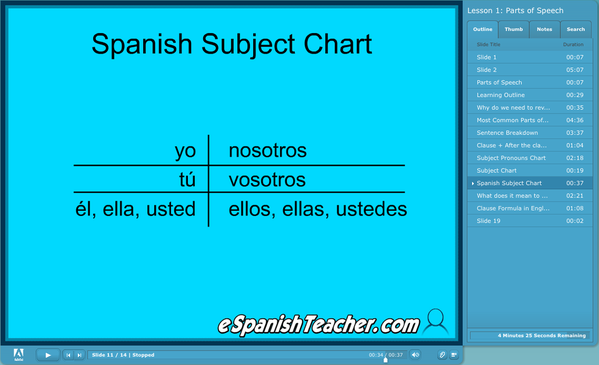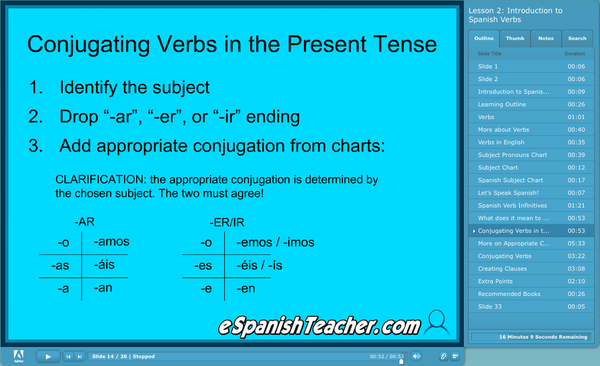|
Spanish verb conjugation is perhaps the most crucial concept for beginner students. So much of what new students learn centers on understanding how to conjugate Spanish verbs. This is because verbs and subjects are the foundational elements of sentence structure and therefore are the foundation of virtually everything you say in Spanish. It’s no different for English—by the way—we just don’t often realize it.
Subject Pronouns or Subjects In Spanish, conjugating verbs is simple, but it does require some explanation as well as a good deal of verbal practice before you’ll understand it completely. Conjugating verbs always begins with the subject of the sentence because we need to know who is acting out the verb. You may hear your Spanish professor refer to subjects as 'subject pronouns', but I think that term confuses people. In my simple mind, they are subjects and it doesn't need to be any more complicated than that. So the subject is the noun (person, place, or thing) that is doing the verb (action word). Common subject are I, you, he, she, it, we, they, etc. Spanish Verbs Verbs are the action word of a sentence, such as run, eat, play, speak, etc. Usually verbs are simple to imagine in your mind. For example, it’s easy to imagine someone running, eating, playing, and speaking. These would all be examples of verbs in their infinitive (pure) form: to run, to eat, to play, to speak. Spanish Verb Conjugation Conjugating verbs requires that you match a subject with a verb. And the most important thing to remember is that the subject determines how the verb is conjugated. When you conjugate a verb, you remove the to and replace it with a subject. In other words, you actually change the verb from its infinitive form (to eat) to a conjugated form when matching it up with a subject. You also sometime change the ending of the verb slightly, such that He + to eat becomes He eats. Or She + to run becomes She runs. This is the essence of verb conjugation, which is the foundation of the Spanish language. It may seem simple in English, but conjugating in Spanish actually presents a couple more challenges because 1) it’s not your native language and 2) the conjugations are much more complex than simply adding an “s” to the end of each verb. This is a quick blog post meant to help you understand the basics of conjugating verbs in Spanish. For a more in-depth look at this topic, as well as a more personalized explaination, verbal exercises, and instant feedback, check out my Beginner Spanish course.In Spanish, a simple example would look like this: Subject: Ella = she Verb: Comer = to eat Ella + Comer = Ella come = She eats To accomplish the example conjugation above, these are the steps we take: 1) Identify the subject 2) Drop the “-er” ending from the verb Comer. 3) While adding the subject, conjugate the verb Comer according to the subject. You can use this subject chart to identify which ending corresponds to which subject. Also, I've included a chart on conjugating verbs in the present tense for reference. Comments are closed.
|
AuthorThis is where we chat about all things Spanish. Feel free to ask a question, challenge me, passionately disagree, or rant about whatever. Just make it interesting. Archives
August 2018
Categories
All
|



 RSS Feed
RSS Feed
